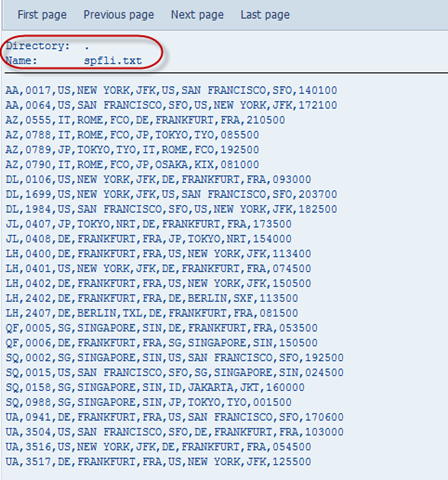

The IDoc is converted to flat file format. IDoc XML to flat format conversion This is normally done when we send an IDoc to our external business partner. You should receive the following message: h4. In the tab “Configuration Properties”, enter the server logon information and click “Save”. *NOTE:* The JNDI name is the JCA Connection Factory name. In the “New JCA Connection Factory Creation” screen, tab “Namespace”, enter a JNDI Name. Click on “Copy and Add New JCA Connection Factory”.

Click on the tab “Dependent JCA Connection”. Select “SAPJavaResourceAdapter15” with the JCA Resource type. Filter on “SAPJavaResourceAdapter15” and click the “Filter” button. In NWA, navigate to: Configuration Management -> Infrastructure -> Application Resources 2. Do a ping test by clicking on “Ping Destination”. Enter authentication information to logon to the server. In our case, without Load Balancing, we entered values for the Host server, System Number and System ID. Enter a Destination Name, and select RFC in the dropdown. Navigate to: Configuration Management -> Infrastructure -> Destination 0.1. The other is to convert IDoc Flat to XML format. One is to convert IDoc XML to Flat format. *User-Module Configuration* For demonstration purpose, in this blog we will create two user-modules. * Configure the user-module using the objects in the above 2 steps.

As a result, to use the user-module, we will need to go through the following steps: * Create a JCA Connection Factory in NWA for the SAP backend system. This gives us a “cleaner” management of entering information for the user-module and also allow us to re-use existing objects in the NWA. Instead of entering these information in the user-module, the user-module will access them through objects in the NWA.

To connect to the SAP backend system, connection information are required. In order to do so, the user-module will connect to the SAP backend system and retrieve the metadata and application-related information and check them against the IDoc message. The new user-module will not only validate the metadata of the IDoc, it will also check the validity of the content. The IDoc-XML messages, once in PI, can easily be used for mappings and configurations. PI 7.11 introduced a new Java adapter user-module which can translate between flat IDoc formatted messages and IDoc-XML formatted messages. In this blog, we will take a look at how we can use PI to integrate directly with our external business partners through flat IDoc formatted messages. Conversely, when we receive messages from our external business partners, they are also often in flat IDoc format. The IDocs would be sent in flat IDoc format to our business partner. When we exchange messages with our external business partners, IDocs are often used.


 0 kommentar(er)
0 kommentar(er)
